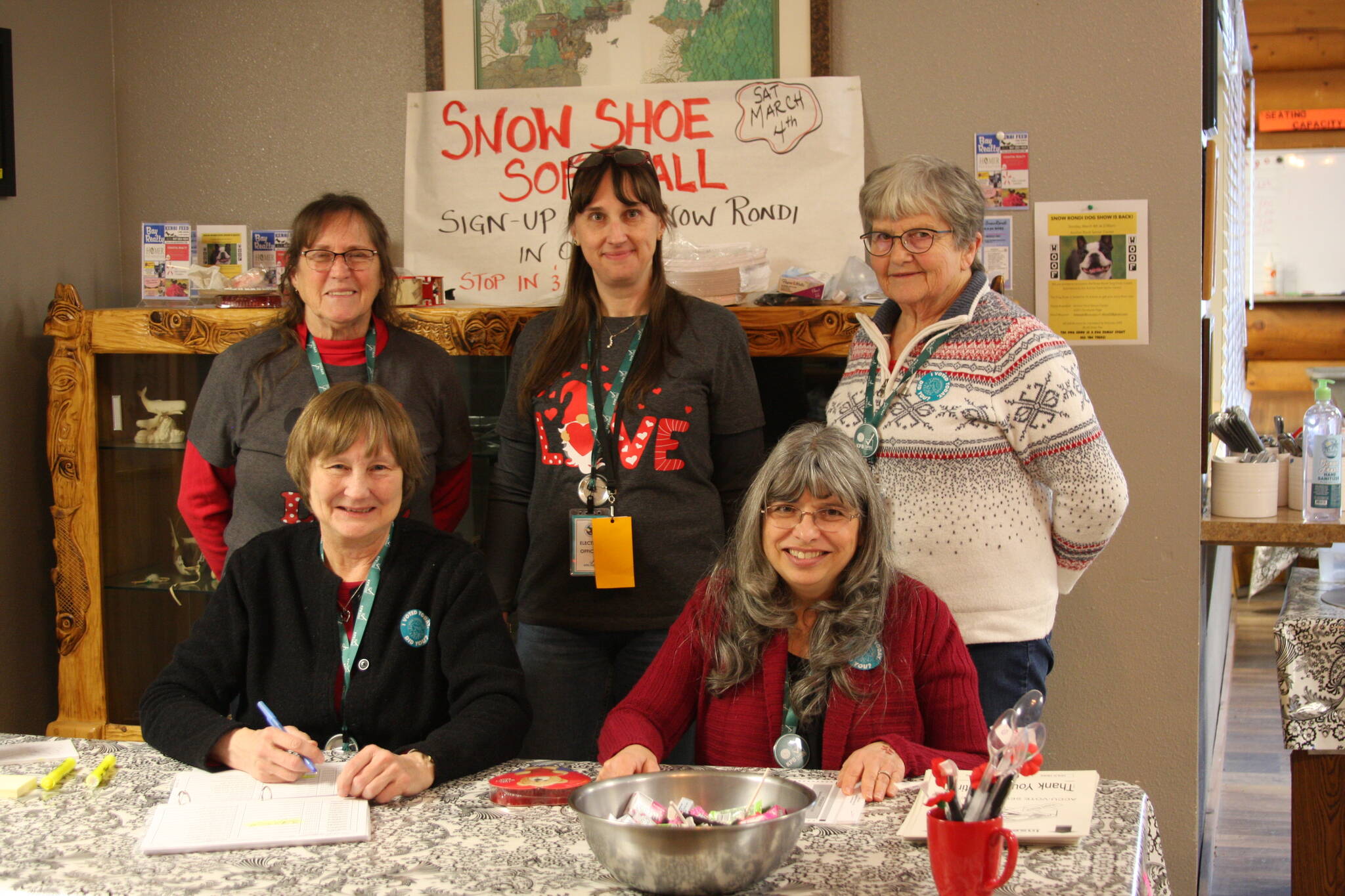Former Alaska Senate President Peter Micciche is leading in the race to become the next mayor of the Kenai Peninsula Borough, election results show.
As of about 10:20 p.m. Tuesday, 27 of the borough’s 28 precincts — 96.4% — had reported results. With 5,004 votes counted, Micciche has received 2,526 — approximately 50.5%. That’s as compared to the next highest vote-getter, Linda Farnsworth-Hutchings, who received just over 870, Dave Carey, who received more than 550 votes and Zachary Hamilton, who received more than 240. There were more than 800 unresolved write-in votes cast and more than 1,700 absentee ballots still to be counted.
As of Wednesday afternoon, results had not yet been reported for Tyonek, which has a little under 400 registered voters, according to previous borough election data.
Kenai Peninsula Borough code requires mayors to be elected with a majority of votes cast. Only if no candidate receives a majority of votes — more than 50% — do the top two vote-getters advance to a runoff election, which the borough assembly scheduled, if needed, for March 7. Assembly members are scheduled to certify the results of the special mayoral election during their Feb. 21 meeting.
Micciche, who is also a former mayor of Soldotna, saw large margins in many central peninsula precincts, such as Nikiski, where he received more than 70% of votes, Seward, where he received more than 61% of votes, Soldotna, where he received more than 56% of votes. On the southern peninsula, Micciche saw smaller margins. He received about 48.4% of the votes cast at the Homer No. 1 precinct and about 42.9% of votes cast at the Homer No. 2 precinct, where Farnsworth-Hutchings overtook him by nine votes.
At precincts across the Kenai Peninsula, poll workers reported sluggish turnout — the borough has so far reported voter turnout of about 7% across all precincts that have reported.
Poll workers in Homer also reported a lower-than-usual turnout. At the Homer No. 1 precinct, about 250 of the precinct’s roughly 3,000 registered voters cast ballots Tuesday — about 8.7%. That number was lower at the Homer No. 2 precinct, where about 160 of roughly 2,500 voters — about 6.6% — cast ballots.
Shari Daugherty, who was helping run the Diamond Ridge precinct at the Homer Chamber of Commerce, said their day got off to a slow start. Just 10 ballots had been cast at that location as of around 8 a.m., jumping to 42 ballots by 12 p.m.
Daugherty said Wednesday that 145 ballots were ultimately cast in the Diamond Ridge precinct, which she said was “a little better than we expected.”
“In my experience, when there’s just one thing on the ballot rather than multiple components, people just aren’t as likely to make it to the polls,” Daugherty said.
At the Anchor Point precinct, held at the Anchor Point Senior Center, roughly 30 ballots had been cast in the first three hours of polls opening. Election staff there said they expected slower traffic, attributing turnout to low advertising for the special election generally.
Turnout eventually cleared 10% in Anchor Point, where more than 240 of the precinct’s roughly 2,400 voters cast ballots.
On the central peninsula, Teresa Minnich was chairing the Mackey Lake precinct at Soldotna Prep School on Tuesday. She’s been helping people vote for more than 30 years and was joined at the precinct Tuesday by her daughter and grandson, who are also election workers.
As of around 1 p.m., 82 of the precinct’s roughly 2,400 voters had cast ballots.
Minnich said she thinks turnout was affected by Tuesday’s blustery weather, the fact that the election was held on Valentine’s Day and the presence of only one race on the ballot. Some snowbirds, she said, may have also voted absentee instead of casting ballots in person.
Generally, Minnich said more voters tend to come in during lunchtime — between 12-1 p.m. — and after school lets out.
“We’re certainly hoping for a few more people than what we’ve got,” Minnich said.
In Kenai, election workers reported similar experiences.
Carol Freas was staffing the Kenai No. 1 precinct on Tuesday, where about 75 ballots had been cast at around 1 p.m. She said some of the precinct’s voting signs were blown down by wind and said it makes sense that turnout is slow for a special election held during the winter, when snowbirds are gone.
“It was really slow, but it’s getting better during the day,” Freas said.
At Kenai Precinct No. 2, located inside the Challenger Learning Center, election worker Barb Norbeck said, while yawning, that turnout so far was “quiet.” She also suspects turnout was affected by weather, but maybe by the potential for a runoff election as well.
“It’s possible that our weather conditions are something keeping people back,” Norbeck said. “Maybe because we are going to end up with a runoff, folks are gonna say, ‘Well, that’s the one I’ve gotta hit.”
Only 40 voters had cast ballots at the Challenger Learning Center as of 1 p.m., though Norbeck said more young voters than usual were participating.
“That is encouraging to me,” Norbeck said.
Election results can be viewed by precinct at kpb.us/assembly-clerk/elections/election-results.
Homer News reporters Emilie Springer and Delcenia Cosman contributed to this article.


